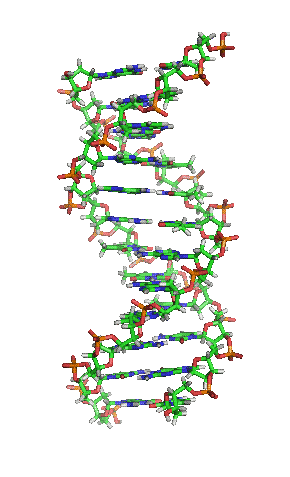Week 3 - Part1: Static Arrays and Dynamic Arrays
- Introduction to Arrays
- Static Arrays
- Dynamic Arrays
- Special Case: Array of Characters (String)
- Basic Operations on Static and Dynamic Arrays
Introduction to Arrays
The main features that characterize arrays structure:
- Arrays are the simplest data structure.
- The array elements are placed contiguously in memory.
- We refer to arrays by the address of the first element.
- Iteration over arrays are very straight forward.
Arrays can be constructed on stack (Static Arrays) and can also constructed on heap (Dynamic Arrays).
Static Arrays
- Static Arrays are fixed in size.
- Size of static arrays should be determined at compile-time (before run-time).
- No need to delete static arrays, they are deleted automatically after going out of scope.
Constructing Static Array
Static arrays can be constructed like so,
// Construction of array-of-integers with size 10.
int array1[10];
// Construction of array-of-characters with size 150.
char array2[150];
// Construction + Initialization of array-of-doubles with size 4
double physicalConstants[] = { 3.1415926 , 2.717 , 1.618 , 1.0 };
// Construction + Initialization of array-of-characters of size 6
char dna[] = { 'A' , 'A' , 'C' , 'T' , 'G' , 'C' };
Accessing Elements of Array
To access array elements, we use the first element address as a reference. First element address is also known as base pointer. Let double a[10] a declaration of static array of 10 elements:
- The first element in the array is
a[0]. - The array base pointer is the address of first element, i.e
&a[0]. - The second element is
a[1]. - The index of array represents the offset (distance) from the first element.
Example: Factorials Sequence
Let factorial an integer array holding a lookup table for factorial numbers
–
int factorial[5];
factorial[0] = 1;
factorial[1] = 1;
factorial[2] = 2 * factorial[1];
factorial[3] = 3 * factorial[2];
factorial[4] = 4 * factorial[3];
Example: DNA Sequence

Let dna a characters array holding some genetic sequence.
// Alternative way of Construction + Initialization of array-of-characters of size 6
char dna[] = { 'A' , 'A' , 'C' , 'T' , 'G' , 'C' };
std::cout << dna[0] << std::endl; // Prints: A
dna[1] = 'T'; // Modifies the second element to 'T'.
std::cout << dna[1] << std::endl; // Prints: T
Iterating Over Static Array
for( int i = 0; i < 6 ; ++i )
{
std::cout << dna[i] << ", ";
}
std::cout << std::endl;
Example: Calculating the mean (avarage) of array elements
Implement the following mean function (logic), to calculate the average of array elements.
\[\bar{x} = \frac{1}{n}\left (\sum_{i=1}^n{x_i}\right ) = \frac{x_1+x_2+\cdots +x_n}{n}\]double mean( double *array , int size )
{
double sum = 0;
for( int i = 0 ; i < size ; ++i )
{
sum = sum + array[ i ];
}
return sum / size;
}
int main()
{
double ecg_samples[] = { 9.1 , 12.9, 12.4, 15.2, 19.0, 23.3 };
// As we said, we refer to arrays by the address of first element.
double ecg_mean = mean( &ecg_samples[0] , 6 );
return 0;
}
Dynamic Arrays
- Dynamic Arrays are allocated on heap.
- Size of dynamic arrays can be determined either at compilation or at run-time (flexible).
- You can construct very large dynamic arrays on heap, unlike static arrays.
- You need to manually delete dynamic arrays after you no longer need them.
Constructing Dynamic Array
// Construction of array-of-integers with arbitrary.
int size = 0;
std::cin >> size; // size determined at run-time.
// You cannot construct static arrays with an arbitrary size like in dynamic array.
int *array1 = new int[ size ];
// Construction of array-of-characters with size 150000 (around 150 Mega Bytes in memory).
char dna_chromosome11 = new char[ 150000 ];
Deleting Dynamic Array: Memory Management
int *array1 = new int[ 900 ];
char *dna_chromosome11 = new char[ 150000 ];
// Do some interesting analysis on your genome.
someInterestingFunction( &dna_chromosome[0] , 150000 );
// Another operations on array1
anotherInterestingFunction( &array1[0] , 900 );
// After we no longer need array1,
delete [] array1; // Note the square brackets!
delete [] dna_chromosome;
Special Case: Array of Characters (String)
In C language, strings (or array of characters) has to be null terminated (add \0 element at the end). Many libraries that processes strings assume strings to be null terminated. We can later avoid this peculiarity by using the std::string object from the standard template library to save a lot of time and prevent headache. In this semester, you are allowed to use std::string after week 5.
For the moment
// Alternative way of Construction + Initialization of array-of-characters of size 6
char dna[] = { 'A' , 'A' , 'C' , 'T' , 'G' , 'C' , '\0'};
std::cout << dna << std::endl; // Prints: AACTGC
Basic Operations on Static and Dynamic Arrays
Copying between arrays
Assume that you want to copy an array to another array (either static or dynamic).
#include <algorithm> // Needed for std::copy
#include <iostream> // Needed for std::cout
int main()
{
char dna1[] = { 'A' , 'A' , 'C' , 'T' , 'G' , 'C' , '\0'};
char dna2[ 7 ];
std::copy( &dna1[0] , &dna1[6] , &dna2[0] );
std::cout << dna2 << std::endl;
}
std::copy, to copy from source array to target array, it takes:
1- Address of first element of source array. 2- Address of last element of source array. 3- Address of first element of target array.